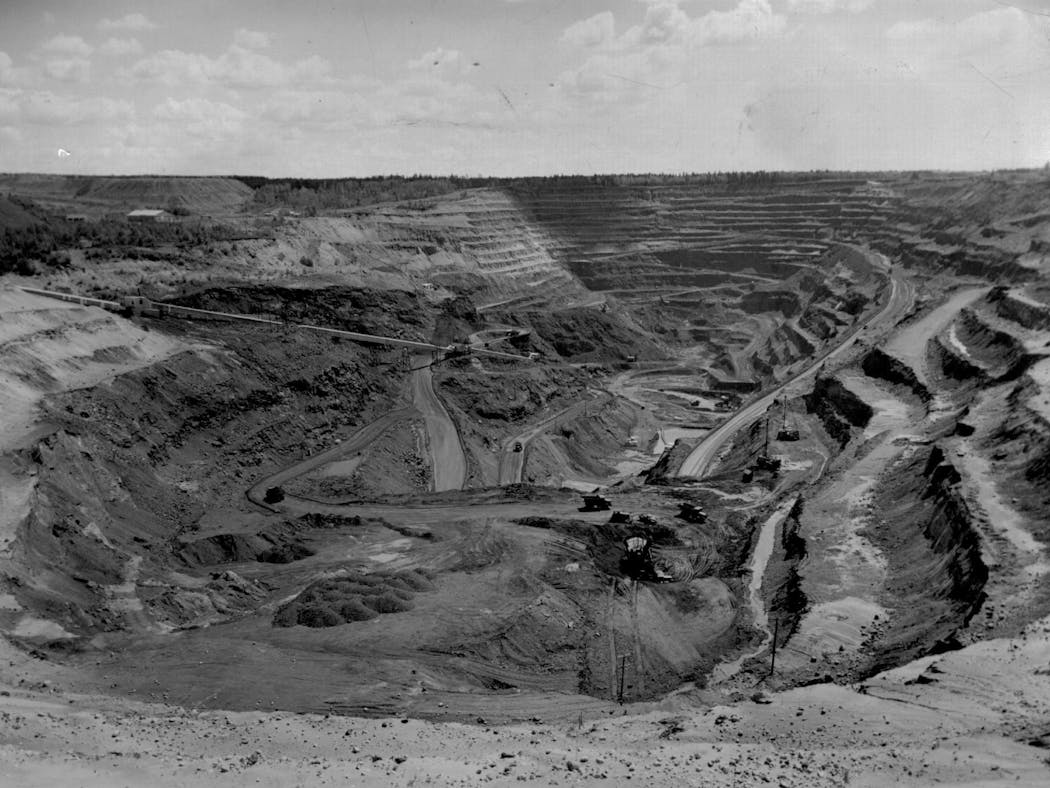What is Minnesota's deepest lake?
Listen and subscribe to our podcast: Apple Podcasts | Spotify
In the Land of 10,000 Lakes, which one dips the lowest?
It's a tricky question in a state that boasts both natural lakes and deep, water-filled mine pits. Brian Chileen submitted it to Curious Minnesota, the Star Tribune's community-driven reporting project, at the State Fair this year.
And it piqued the interest of fairgoers, who voted "What's the deepest lake in Minnesota?" to be among their favorite questions during Curious Minnesota Day at the Star Tribune's State Fair booth.
"I have a lake in mind, it's kind of close to where we live," said Chileen, a lifelong resident of the Iron Range. "I didn't know if it truly was [the deepest]. It was just the rumor."
The most obvious answer would seem to be Lake Superior, the biggest of the Great Lakes, with its deepest point more than 1,300 feet below the surface. But most of Superior's shoreline and waters aren't part of Minnesota. That deepest point isn't close, either, sitting 40 miles north of Michigan's Upper Peninsula.
Chileen agreed that Superior should be ruled out. Also removed from contention were other lakes not entirely in Minnesota, like Lake Saganaga, which falls on both sides of the U.S.-Canadian Border in the Boundary Waters Canoe Area Wilderness.
Measuring the mines
So the next most obvious answer was the Portsmouth Mine Pit, not far from Chileen's hometown of Ironton. That's the waterbody he suspected might come out on top, and one that often pops up in search engine results. It's also listed as the deepest lake inside the state on a Minnesota Department of Natural Resources web page.
That page, however, hasn't been updated in a decade. And other publicly available sources of data provided by the DNR showed much shallower estimates for the depth of the Portsmouth pit.
The DNR is the official state keeper of lake statistics, which it compiles in its LakeFinder database. It tallies depths in a number of ways, from modern sonar to the older method of soundings (the process of repeatedly dropping something to the bottom and seeing how far it falls). In a few cases, the DNR is relying on maps from old mine companies to pinpoint how deep a pit might extend under the water.
When the Star Tribune compiled a list of the deepest lakes in Minnesota and asked the DNR to check it, Portsmouth was not the leader.
The deepest lake in Minnesota is the Mahnomen, Arco and Alstead Lake, named for three adjacent mine pits that have since filled in with water. The complex is directly north of Ironton, in Crow Wing County, and just across Hwy. 30 from the Portsmouth Pit. Part of the lake falls inside the Cuyuna Country State Recreation Area.
It is not clear why Portsmouth was once listed as the deepest by the DNR. Water levels can change, depending on how much water is flowing in and out of a lake. Mike Liljegren, assistant division director for lands and minerals at the DNR, said it is possible that the agency was previously relying on an old mine map of Portsmouth, but later checked the water depth and found a shallower number.
The deepest point of Mahnomen, Arco and Alstead Lake is in the former Mahnomen Mine Pit area, which reaches 525 feet deep. The iron mine started shipping ore in 1916, according to a report that year in the Brainerd Dispatch. It was one of the first pits in the Cuyuna Range, a smaller iron formation that was opened to mining later than the Mesabi Range to the northeast.
Like many other Minnesota iron mines, the Mahnomen Mine helped provide raw materials for World War II. The St. Cloud Times reported in 1942 that the mine was expanding to fuel the war effort. It closed in the early 1960s.
It's not surprising that the pits have since filled in with water. In many Minnesota iron formations, there's already groundwater flowing through cracks and fissures in the rock, Liljegren said. Miners have to constantly pump that water out so they can extract ore.
"The day that they quit mining and turn those pumps off ... that's when the pit starts to fill back up," Liljegren said.
What is the deepest natural lake?
There is one wrinkle, though: Should the Mahnomen, Arco and Alstead be considered a lake at all?
Liljegren said there needs to be a distinction between natural lakes and man-made mine pits that happen to fill with rain and groundwater. Permitting rules are more relaxed, in some cases, for mine pits compared to natural lakes.
Removing mine pits from contention for deepest lake would knock off several of Minnesota's deepest bodies of water. Many of the mine pits reach between 300 and 400 feet — which Liljegren theorized may have been the point when it became cost-prohibitive to mine deeper.
The deepest natural lake is Loon Lake in Cook County along the Gunflint Trail, according to the DNR. At 214.9 feet deep, it reaches less than half the depth of the Mahnomen Mine Pit.
But Liljegren's DNR colleague, Lake Ecology Unit Supervisor Steve Kloiber, said he didn't see such a firm distinction between pits and natural lakes. To him, what matters more is the ecosystem inside the water — whether there are plants, insects and fish typical of a Minnesota lake.
"The problem is that there's no universally agreed on definition of what a lake is," Kloiber said. "It depends on what your purpose is, and how you're looking at it."
And there are certainly fish in mine pit lakes on the Cuyuna Range — in many cases, the DNR stocks them.
The area around Mahnomen has actually become a beloved area for outdoor recreation. A report by Pioneer PBS showed it is a popular place for scuba divers to take a plunge. Chileen said he's a fan of the mountain biking paths around lakes like Mahnomen, Alstead and Arco, which have "transformed our little town."
Trees have grown in around the pits, and Chileen no longer sees them as simply a human creation.
"I would call it a lake," he said.
Jake Steinberg contributed to this report.
If you'd like to submit a Curious Minnesota question, fill out the form below:
Read more Curious Minnesota stories:
Does water really only flow out of Minnesota — not into it?
Why does Minnesota have so many lakes?
How do Minnesota lakes get their names?
Is Minnesota's tiny Lake Itasca the true source of the Mississippi River?
What Minnesotans want to know about their Land of 10,000 Lakes
How safe is it, really, to walk on the iced over lakes in Minnesota?





